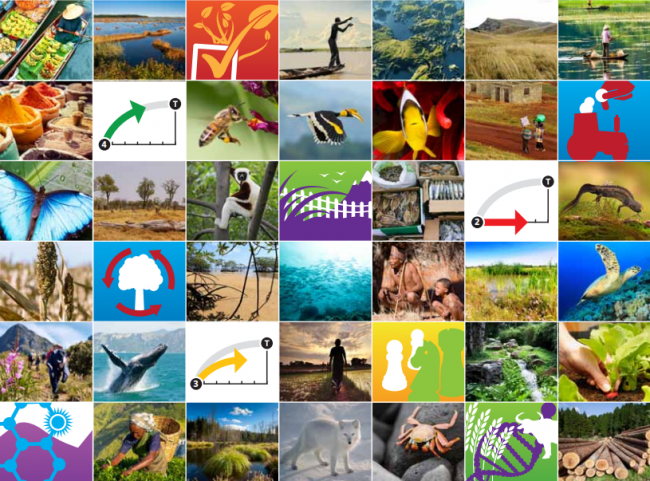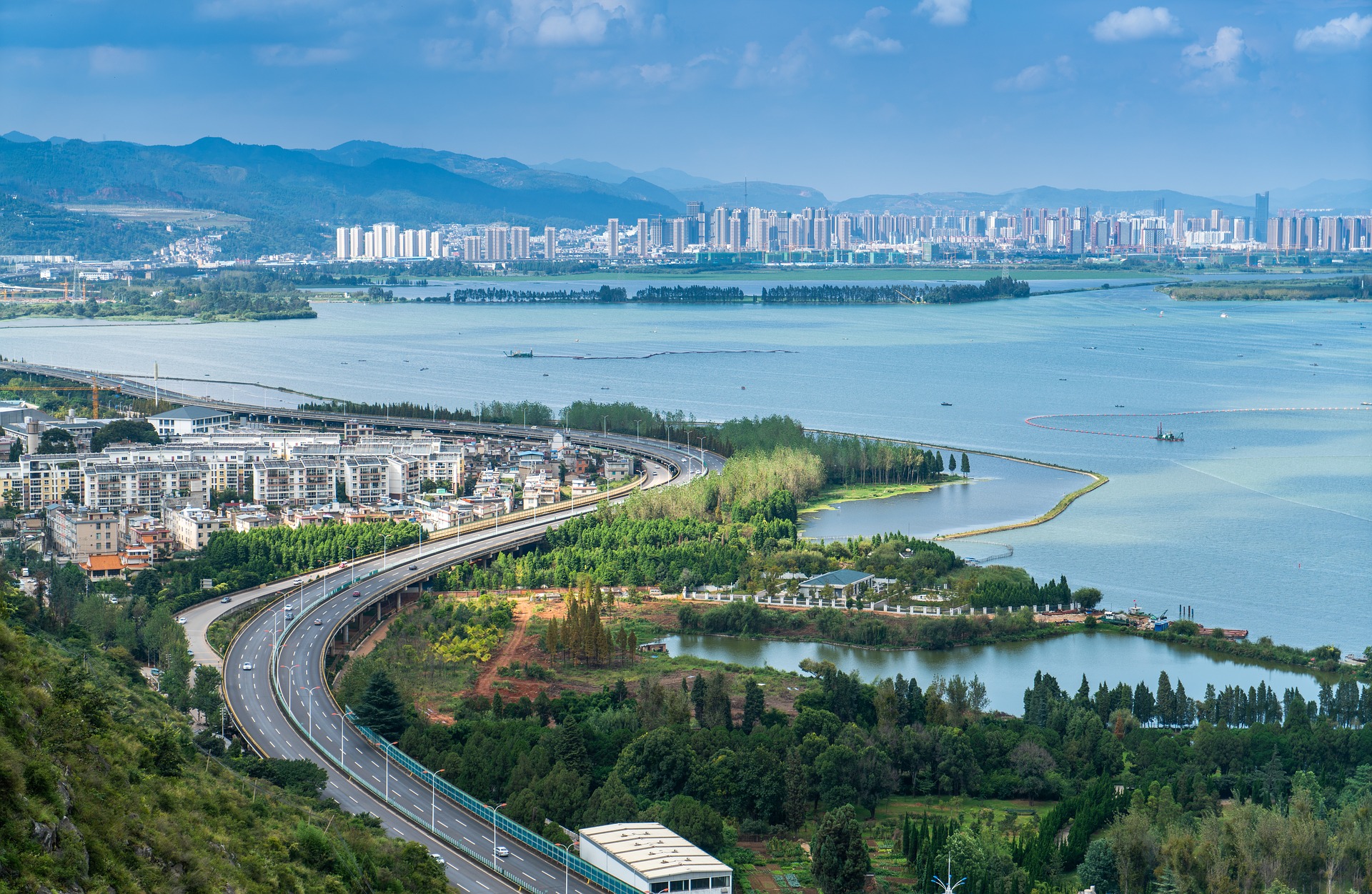By Amelie Claessens, IUCN Urban Alliance
Summary and highlights
On 15 September, with the curtain falling on the United Nations Decade on Biodiversity, the Secretariat of the Convention on Biological Diversity (CBD) launched a major international report. The 5th Global Biodiversity Outlook (GBO-5) examines the state of the world’s biodiversity and reflects on progress made towards the implementation of the Strategic Plan for Biodiversity 2011-2020. Consisting of five Strategic Goals and 20 corresponding Aichi Targets, the Plan was conceived as a flexible framework for channelling action towards a long-term 2050 Vision:
By 2050, biodiversity is valued, conserved, restored and widely used, maintaining ecosystem services, sustaining a healthy planet and delivering benefits essential for all people.
Strategic Plan for Biodiversity 2011-2020
However, according to the GBO-5, only six of the 20 Aichi Targets have been partially achieved and none has been met in full. Biodiversity continues to decline at an unprecedented rate while the pressures driving this decline appear to be intensifying.
As we enter the third decade of the millennium, humanity stands at a crossroads with regard to the state of global biodiversity, the changes we are witnessing and the legacy we wish to leave to future generations.
GBO-5
If we are to secure a future in which humans live in harmony with nature, then clearly, business-as-usual is not an option. Despite the limited progress over the past decade, the 2050 Vision remains the benchmark and will guide global action on biodiversity for the foreseeable future. To this end, the GBO-5 lays out eight interdependent transitions representing different aspects of the interface and links between human activity, human well-being and nature. They include Land and Forests; Freshwater; Fisheries and Oceans; Sustainable Agriculture; Food Systems; Cities and Infrastructure; Climate Action; and One Health. Each of these transitions is necessary but none will suffice alone.

Cities and infrastructure
The Cities and Infrastructure transition recognises the need for biodiversity-inclusive spatial planning to deliver health and wellbeing benefits to urban people. It also recognises the teleconnections between cities and nearby or distant ecosystems, through global trade and supply chain networks as well as the dynamic properties of urban pollution. The key components of this transition focus on minimizing the negative impact of urban infrastructure development on biodiversity, enhancing resource-use efficiency, minimizing land-use change, and reducing ecological footprints.
Investing in urban nature can promote native biodiversity whilst providing solutions (i.e. nature-based solutions) to a range of pressing urban challenges including flooding, heat stress, drought and pollution. Examples from around the world attest that nature-based solutions can cost-effectively enhance the sustainability, resilience and liveability of cities.
Green spaces can also help to reduce the urban ecological footprint. For example, urban and peri-urban agriculture can benefit biodiversity by boosting local food production and reducing pressure for the conversion of distant natural habitat to cropland. A city’s footprint can be further reduced by encouraging healthier, localised diets, as well as more sustainable use of materials in infrastructure development. Indeed, sustainable urban development must consider the functioning of ecosystems both within and beyond urban boundaries, not least because many of the ecosystem services that urban people depend on—notably freshwater—cannot be generated locally.
Lastly, it is important to emphasize the health and wellbeing benefits of urban nature especially in times of crisis. When COVID-19 threw the world in a state of panic, many people turned to nature to find solace and fortitude. Recent surveys suggest that people are now demanding more nature in their cities. The pandemic has also shone a spotlight on ethical dimensions of green space. In most cities, its provision is inadequate or distributed unevenly, along lines of affluence. Stark inequities persist. Far too many people are denied nature’s benefits.
From crisis to opportunity
Some scientists suspect that the COVID-19 pandemic is a consequence of humankind meddling with nature. If so, it is certainly not the first zoonotic disease to fire a warning shot—the Ebola and Zika viruses are still with us—and if we continue grating against the wilderness, then we can only expect that more will follow.
Despite the stark and sobering conclusions of the GBO-5, the international community can ill-afford to give up. Rather we must strengthen our resolve to stem the loss of biodiversity, restore the health of our planet and secure a brighter future for all.
In 2021, we have a chance to do just that. World leaders will meet in Kunming, China, to adopt on a ‘Paris-style’ agreement for nature. The 15th Conference of the Parties to the CBD, coupled with the deployment of massive stimulus packages aimed at ameliorating the social and economic fallout of COVID-19, create what may amount to a once-in-a-generation opportunity to reset our relationship with the natural world.
However, if the post-2020 Global Biodiversity Framework is to fulfil its promise, it will need to capture the imaginations of city leaders, harness urban capacities, and unlock urban potential. The grand story of our species transitioning to an ‘ecological civilisation’ will be composed and played out in cities.
Further information
We have scrutinised each of the eight transitions and distilled the components pertaining directly to cities. They are listed as follows:
The land and forests transition
- Depends on reducing land pressure on ecosystems through improved planning of urban expansion and infrastructure development; contributes to ecosystem services essential to urban populations
- Depends on services from protected or restored ecosystems, essential to urban populations; contributes to reducing land pressure on ecosystems through improved planning of urban expansion and infrastructure development
The biodiversity-inclusive one health transition
- Depends on greater access to urban green spaces to improve mental and physical health, and on improved planning to avoid increased disease risk from infrastructure development in high-biodiversity areas.
- Contributes to mental and physical health through greater access to urban green spaces, and by reducing pollution
The sustainable freshwater transition
- Depends on reduced water consumption in urban areas, controlled urban expansion and use of green infrastructure; contributes to supply and quality of water for urban populations
- Depends on sustainable management of freshwater ecosystems for urban water supply and quality; contributes to the conservation and restoration of freshwater ecosystems through reduced water consumption, controlled urban expansion and use of green infrastructure
The sustainable food systems transition
- Depends on a new urbanization vision, including more sustainable supply chains and reduced food waste measures, and innovations such as urban gardens and city farms
- Contributes to more sustainable food supply chains and reduced food waste, through a new urbanization agenda that also includes innovations such as urban gardens and city farms
The sustainable climate action transition
- Depends on climate change mitigation provided by the use of green infrastructure, and resilience to climate change provided by more sustainable urban environments
- Contributes to climate mitigation through use of green infrastructure, and to climate adaptation by increasing resilience among urban populations
